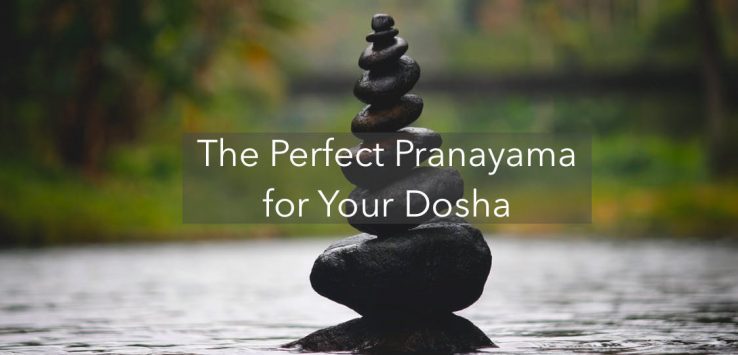- 3Shares
Pranayama is a yogic practice that consists of several techniques for breathing. It has been a part of Ayurveda for thousands of years. The ancient sages discovered that by controlling and directing our “prana” or life force, we can calm, rejuvenate, strengthen, cleanse and energise bodies as well as minds. There are various kinds of Pranayama, each of which serves a specific set of purposes and can help with balancing certain elements in human beings. From this article, you’ll be able to choose the perfect Pranayama for your dosha.
The Perfect Pranayama for Your Dosha
Sitali Breath for Pitta Dosha
A Bit about Pitta:
Pitta is widely linked to fire, but consists of both fire and water. It is hot, liquid, intense, light, and penetrating. It is responsible for transformation and its processes, like digestion. When your pitta is out of balance, you feel highly heaty and easily irritated, you may develop acne, ulcers, heartburn and such heat-related problems in your body, and your digestion is likely to be affected.
In this case, you should try the cooling and rejuvenating Sitali Breath.
Directions for Sitali Breath to Balance Pitta:
- The Position: Sit comfortably with your back straight, eyes closed, shoulders relaxed and chin slightly lowered.
- The Cycle:
- Put your hands on your lap and face them to the ceiling.
- Now, curl your tongue (with the left and right sides rolling into the centre) and slightly extend it outside your mouth.
- Counting up to 4, inhale through your mouth. This should produce a hissing sound.
- Counting up to 6, exhale through your nose.
- Repeat the process for 5 minutes.
Understand your Dosha: More about Pitta
Bhastrika for Kapha Dosha
A Bit about Kapha:
Kapha consists of water and earth. It is solid, heavy, cool, oily, sticky, soft and slow-moving. It is responsible for protection and structure, like the skeletal system. When your kapha is out of balance, you feel sluggish, excessively sleepy, unmotivated, depressed, and attached to things, people and places. You may also gain weight and suffer from congestion, asthma, hay fever or diabetes.
You should try Bhastrika, which is warm, energising and capable of removing excess mucus.
Directions for Bhastrika to Balance Kapha:
- Do this on an empty stomach.
- The Position: Sit comfortably with a tall spine and hands on your lap. Padmasana (lotus pose) is a good posture to have. Relax your facial muscles.
- The Cycle:
- Close your eyes and inhale deeply through your nose, filling your lungs up as much as possible.
- Then, breathe out fully.
- Do both inhalation and exhalation for equal duration, approximately 3 seconds.
- You can continue this for half a minute.
Note!
If you are pregnant or are suffering from a heart or respiratory condition, avoid this.
Understand your Dosha: More about Kapha
Nadi Shodhana for Vata Dosha
A Bit about Vata
Vata comprises of air and space. It is dry, cool, light, fast-moving, rough and clear. It is responsible for movement and activities of the nervous system. When your vata is out of balance, you tend to feel nervous, spaced out, drained, and restless. You may lose weight, suffer from indigestion, and find it hard to sleep. Arthritis, insomnia, and anxiety are all associated with vata imbalance.
The Pranayama for you is Nadi Shodhana, which brings grounding and stillness.
Directions for Nadi Shodhana to Balance Vata:
- The Position: Sit comfortably with your back erect, chest open and eyes closed.
- The Cycle:
- With your right thumb, close your right nostril.
- Slowly and gently, inhale through the left one.
- Then, holding your breath, close your left nostril with your ring finger.
- Slowly and gently, exhale through the right one.
- Repeat this round for 5 to 10 minutes.
Understand your Dosha: More about Vata
The Closing Note
With consistent practice, Pranayama can be a powerful tool in bringing about a state of balance and harmony is your body, mind and life. Go ahead, select the perfect Pranayama for your dosha, print out the directions and stick them on your wall!






Leave a Reply